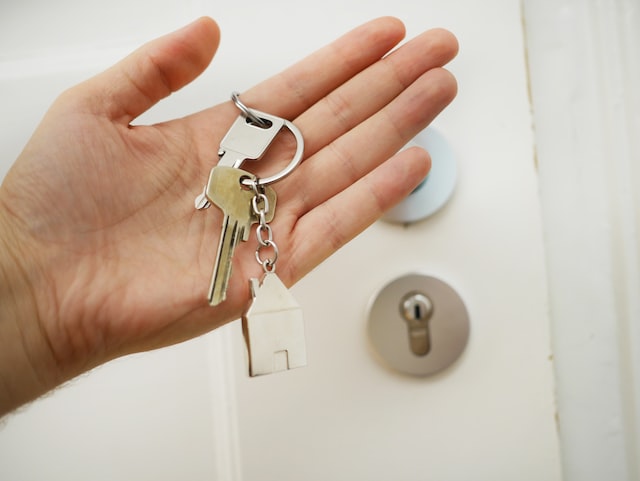
You may not have planned to be located far away from your rental property, but life happens, and you might find yourself having to move to a new city for your family or career. However, moving away doesn’t mean you have to sell your investment properties. Nowadays, advanced technology works to the advantage of long-distance landlords.
Keep in mind that managing a property from far away can be filled with certain challenges. You can’t be there to attend to maintenance concerns or mediate tenant disputes. As a result, long-distance landlords have to learn to navigate property management wisely to make sure their rental business continues to thrive, even from a distance.
Here is our set of recommended tips that long-distance long-distance landlords can follow:
5 Tips to Succeed as a Long-Distance Landlord
1. Rent to Responsible Tenants
By selecting the right residents, you set yourself up for success, especially if those people become long-term tenants. Since you’ll only have limited interaction with your renters and won’t be able to visit the property very often, you want to carefully screen tenants to make sure you feel confident with the people living in your units.

Your tenant screening process should evaluate applicants based on criteria like:
- Good tenant history
- Stable job
- Income thrice the rent amount
- No criminal record
- No bankruptcy record
It may take time and effort but accepting responsible renters can eliminate a lot of worry for long-distance landlords.
2. Communicate Regularly with Your Renters
Since you will not be able to visit your rental property anytime, make sure that your renters and you foster an open communication line. They must feel comfortable reporting property issues, such as water leaks, broken appliances, or damaged tiles.
This will help you act quickly to avoid high repair costs and schedule a repair right away. A well-managed rental inspires tenants to renew their leases.
When a new tenant arrives, ensure you hand over your contact details. If there are changes, inform them so they can always reach out if they are facing any property concerns.
A good move is taking the initiative to call your renters each month. This way, you always know how they are doing and be updated with the state of your property. But don’t forget to honor the renters’ privacy.
3. Schedule a Yearly Trip to Your Rental
Part of the benefits long-distance landlords gain is the favorable US tax laws. Costs of visiting an out-of-state rental property are covered and considered tax-deductible, making it affordable to check in on your rental in person at least once a year. The expenses from your flight, mileage, hotel bookings, and even meals can be deducted from the income your rental property earned.

What is great about physically checking your rental space in person is you can see all the details in front of you. You can also talk to the tenants about how they’re enjoying the space. While you may trust your tenant, it’s important to see the property for yourself at least once a year. There may be issues that tenants don’t realize are issues. Your property is an investment, and you can’t afford to not manage it well.
4. Be Closely Aware of Your Competition
As a long-distance landlord, it can be harder to stay up-to-date on what’s happening in the area around your property. You should be proactive and take time to learn how the area is progressing and whether new construction or conditions could impact your business. Changes in local policies, new businesses, and shifting demographics can affect the rental market demand in your neighborhood.
If you don’t know what’s going on, it can be difficult to maximize the opportunities. For example, if you learn that a major company is setting up headquarters near your area, then you know there’s likely to be an influx of new potential renters.
If public infrastructure is being built, you can also expect the rental demand to rise. You can now assign the best rental rate and ensure your prices remain competitive. The more progress in your area, the greater the increase in property demand, so make sure to stay on top of the news.

5. Create a Local Network of Reliable Repair Specialists
As your rental property is occupied by many tenants over time, it’s bound to show wear and tear. As a long-distance landlord, be ready to tackle property maintenance. Landlords staying closer to their rentals can easily visit and reach out to local service providers when maintenance issues are reported.
Meanwhile, if you’re miles away, you might not even see the extent of the property damage and the details. That’s why, it is essential to build a network of local vendors to support you when it comes to repairing property damage. Keep a list of reliable contractors available that you can contact anytime tenants report a problem.
How Local Property Managers Help Long-Distance Landlords Succeed
A good option for long-distance landlords is to hire a property management company to take over the day-to-day operations of your rental property. Having a committed team of professionals by your side means a lot less worry and stress for you.
Local property managers can help you advertise a vacant rental unit, create lease agreements, collect the rent, schedule property inspections, screen tenants, and more. They can also be there on your behalf if any property emergency happens. Typically, they have their vetted network of local vendors or in-house maintenance staff they can call when a repair is needed.
With a professional property manager, you can rest easy knowing your rental property will be well taken care of. Are you a long-distance landlord looking for a trusted property management company in the greater Bay Area? If you are, contact Castle Management today!
